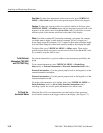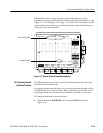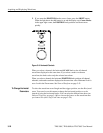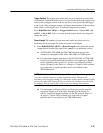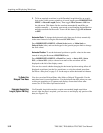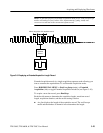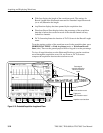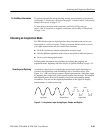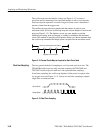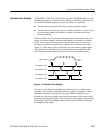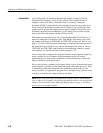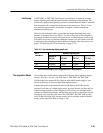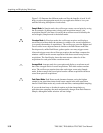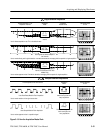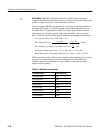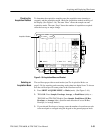
Acquiring and Displaying Waveforms
3–26
TDS 500C, TDS 600B, & TDS 700C User Manual
The oscilloscope uses the samples it takes (see Figure 3–13) to create a
waveform record containing a user-specified number of data or record points.
Each record point represents a certain voltage level that occurs a determined
amount of time from the trigger event.
The oscilloscope may take more samples than the number of points in your
waveform record. In fact, the oscilloscope may take several samples for each record
point (see Figure 3–12). The digitizer can use any extra samples to perform
additional processing, such as averaging or looking for minimum and maximum
values. The methods of sampling and acquisition modes you choose determine how
the oscilloscope assembles the sample points it acquires into the waveform record.
Samples for a record point.
Interval for one waveform record point.
Figure 3–12: Several Points May be Acquired for Each Point Used
The two general methods of sampling are real-time and equivalent-time. The
TDS 600B Oscilloscopes use only real-time sampling; the TDS 500C and
TDS 700C Oscilloscopes use both real- and equivalent-time sampling.
In real-time sampling, the oscilloscope digitizes all the points it acquires after
one trigger event (see Figure 3–13). Always use real-time sampling to capture
single-shot or transient events.
Sampling Rate
Record Points
Figure 3–13: Real-Time Sampling
Real-time Sampling



